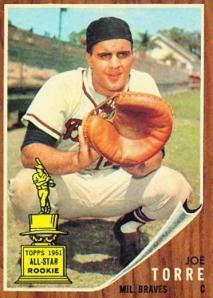Catchers Rule!
I’ve gone to a lot of baseball games with my sister Nancy. She’s not a huge baseball fan, but she’s willing to go to a ballgame and knows what’s happening on the field when she gets there. She’s easy-going and enjoys chatting with the other fans. There’s just one thing, however, that I’ve grown to expect over the years. She’s good for at least one truly weird comment per game. Such was the case during one of our outings at the ballpark not too long ago. When the players took the field to begin play, she loudly exclaimed to me, and everyone else within earshot, that she liked the catcher’s outfit!
 As strange as it seemed to me at the time, in her own unique way, Nancy did have a point. Catchers really are noticeable. Every other player on the field faces in towards the plate, but the catcher faces out. Their appearance is vastly different as well. They wear more gear than the others. Chest protectors. Shin – leg guards. Masks. In my opinion, some of the newer masks look like they should be used by hockey goalies. With all of this protection you’d think that catchers would have it made, but that’s hardly the case. Back in the day when a youngster decided to become a catcher, it was said that he had picked up the “tools of ignorance.” In many ways that saying still holds true. Why?
As strange as it seemed to me at the time, in her own unique way, Nancy did have a point. Catchers really are noticeable. Every other player on the field faces in towards the plate, but the catcher faces out. Their appearance is vastly different as well. They wear more gear than the others. Chest protectors. Shin – leg guards. Masks. In my opinion, some of the newer masks look like they should be used by hockey goalies. With all of this protection you’d think that catchers would have it made, but that’s hardly the case. Back in the day when a youngster decided to become a catcher, it was said that he had picked up the “tools of ignorance.” In many ways that saying still holds true. Why?
It’s because catchers take a horrific beating behind the plate. Foul tips can break or jam their fingers. Umpires stand right behind them and sometimes lean on them to balance themselves. Knees get worn out fast. The hitter’s bat can and will periodically strike them. Collisions with runners trying to run past or occasionally through them in an effort to score can lead to serious injuries. So other than the obvious “because they enjoy it” answer, why do they do it?
I believe there is a tremendous upside to catching. Catchers are fully involved in the game. They call the game, signaling to the pitcher the type and location of each pitch that’s about to be thrown. Because a big-league club carries about a dozen pitchers, successful catchers learn how to get the best out of each one. Pitcher’s don’t come in just one size or one personality either, they’re all different, and the catcher has to establish a relationship with each one. Catchers have to know the strengths and weaknesses of the opposing team’s hitters, as well as vary the pattern of the pitches they call to keep them off-balance. It’s relatively easy to get most hitters out at least one time through the lineup, but part of the catcher’s job is to ensure that these hitters are retired three or four times per game. Catchers often go out to the mound to talk to the pitcher, or to settle him down after a few runs are scored. Catchers have to consider what the other team will be trying to do as well. They anchor the defense, periodically repositioning players to give their team a greater chance of preventing runs. The sum total of these activities place catchers in a unique position to master-key facets of the game. Their experience prepares catchers to become excellent major league managers.
 A major league manager will deal with all types of people, make countless decisions during each game, know how to get the best out of his players, be familiar with the strengths, weaknesses and strategies of the opposing team and its manager and, most importantly, win ball games. How are catchers doing? Over the past fifteen years, the World Series Champion has been managed by a former catcher ten times, included the three pictured here. That, ladies and gentlemen, is a batting average worthy of admittance into the Baseball Hall of Fame. So here’s a tip of the cap to all you catchers out there from our team here at Grubby Glove. This post is for you.
A major league manager will deal with all types of people, make countless decisions during each game, know how to get the best out of his players, be familiar with the strengths, weaknesses and strategies of the opposing team and its manager and, most importantly, win ball games. How are catchers doing? Over the past fifteen years, the World Series Champion has been managed by a former catcher ten times, included the three pictured here. That, ladies and gentlemen, is a batting average worthy of admittance into the Baseball Hall of Fame. So here’s a tip of the cap to all you catchers out there from our team here at Grubby Glove. This post is for you.


Chris Davis; an excellent choice for the next 1962 Honorary New York Met. Just getting traded from a first place team to a last place team would have qualified him, but going hitless when your team gets 20 runs in a game, along with making two errors, is the icing on the cake.